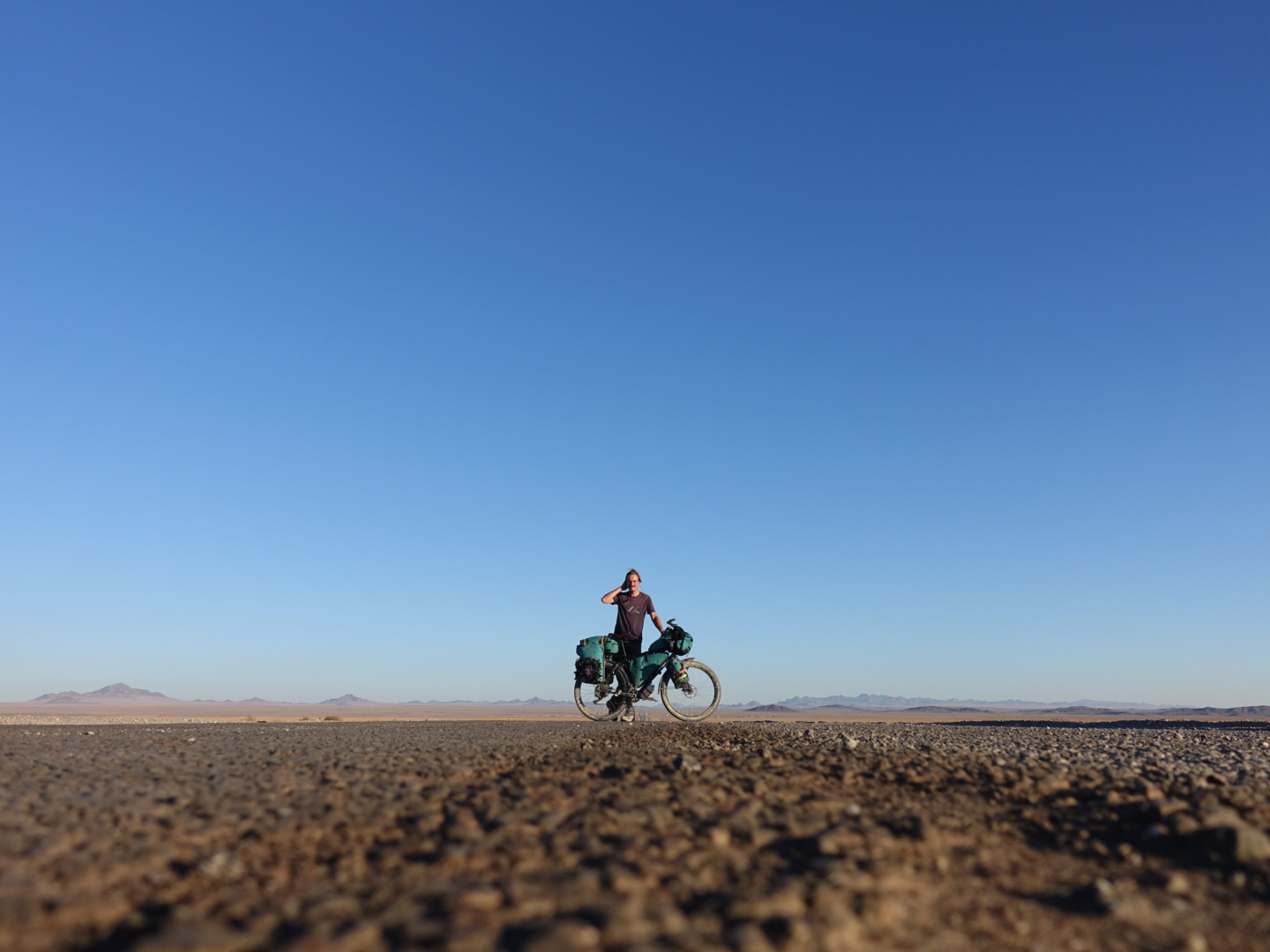Esfahan
The bus brought me to Esfahan in four hours. My ass still wasn't feeling great, that was to be expected, but the bus' seats were a whole lot more comfortable than a bicycle saddle. I had been given food by the family of the guy who invited me in for food and a bed while I was on the way to Arak, which was a thoughtful gift for a long bus trip. I arrived at 21:00 on the outskirts of Esfahan. I prepared for a slow and stressful ride through the city, but was spared all that as I quickly rode the ten kilometers to the hostel I wanted to sleep at that night.
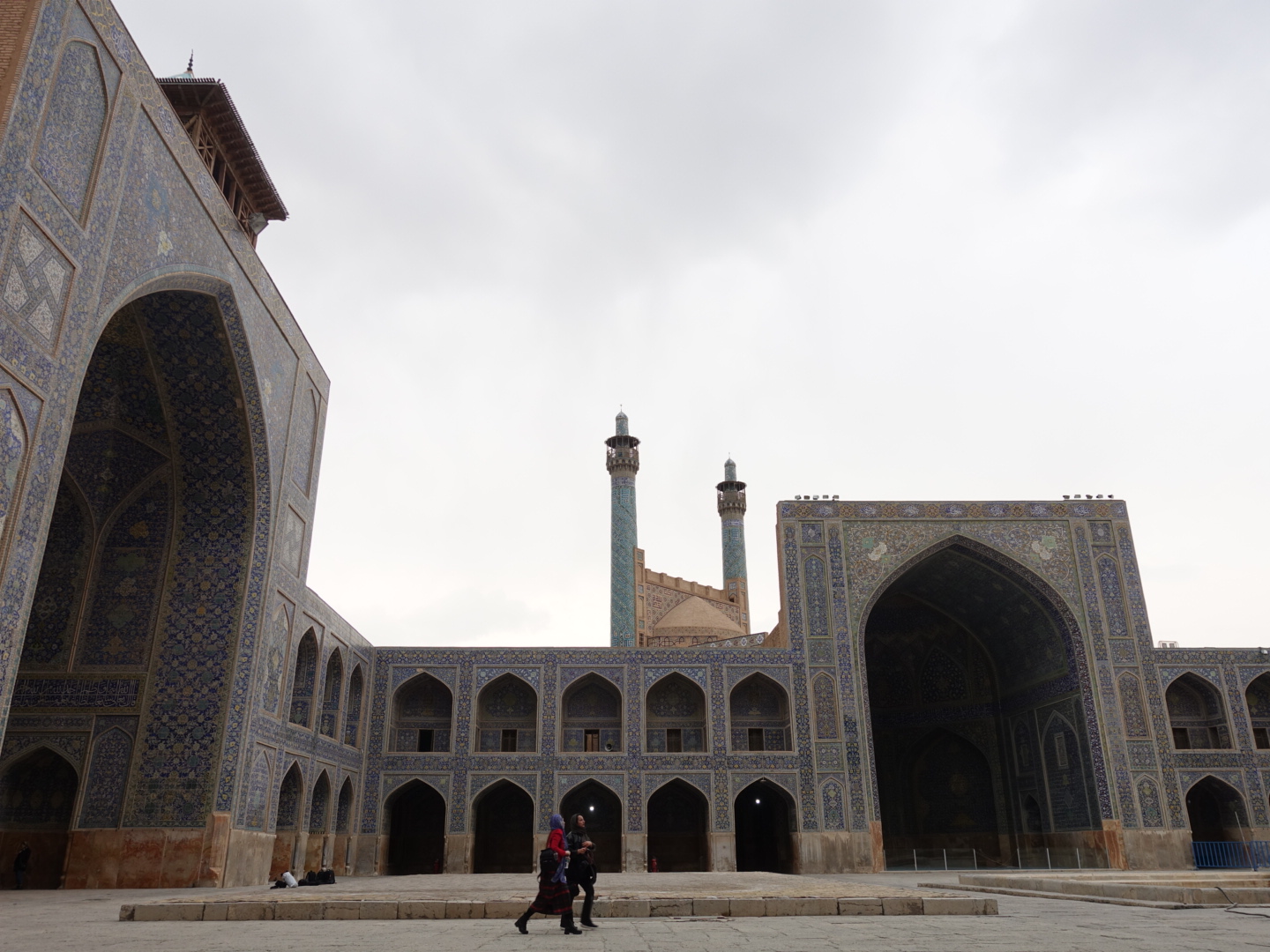
I made sure I would pass by Naqsh e Jahan square that night. It is a beautiful square of immense proportion and beauty. I wanted to see it on that first night as I fondly remembered it from when I first saw it five years ago. A quick glance, relishing the resurfacing memories, and I was on my way to my bed.
I had picked a great hostel by chance. I opted to stay there for five nights, hoping that would give my bodily ailments enough time to heal, and it did. I met a great number of people, some foreigners, some Iranians, with which the mornings and evenings were spent talking and drinking tea. That would be the pattern for those subsequent days: wake up, have breakfast, spend most of the morning talking, head out for a couple of hours, then more tea and conversations in the evening.
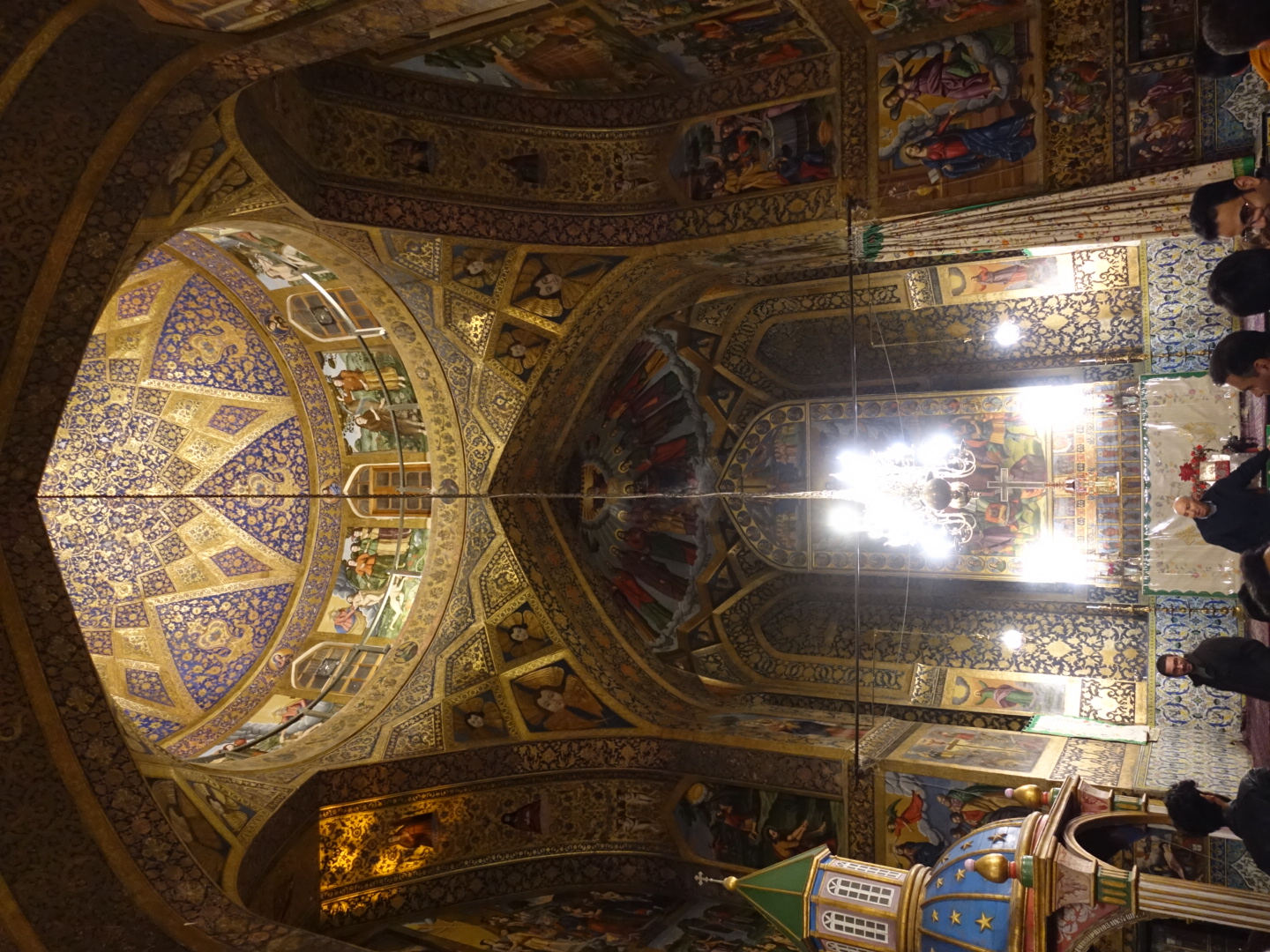
And with that gathering of people we would celebrate new year's eve. There was some music, some dancing, snacks brought by everyone and more tea. The hostel's employees were so considerate to arrange some sparklers that we would light after our little countdown to midnight. For the Iranians the timezone was correct, but the date was wrong (as they celebrate Nowruuz), and for the foreigners the date was correct, but we all were removed a varying degree of hours from our personal friends. I had my first true pangs of homesickness, but had a good time regardless. Shortly after midnight we turned in for the night, as our celebrations produced a bit of noise that the neighbours weren't too fond of.
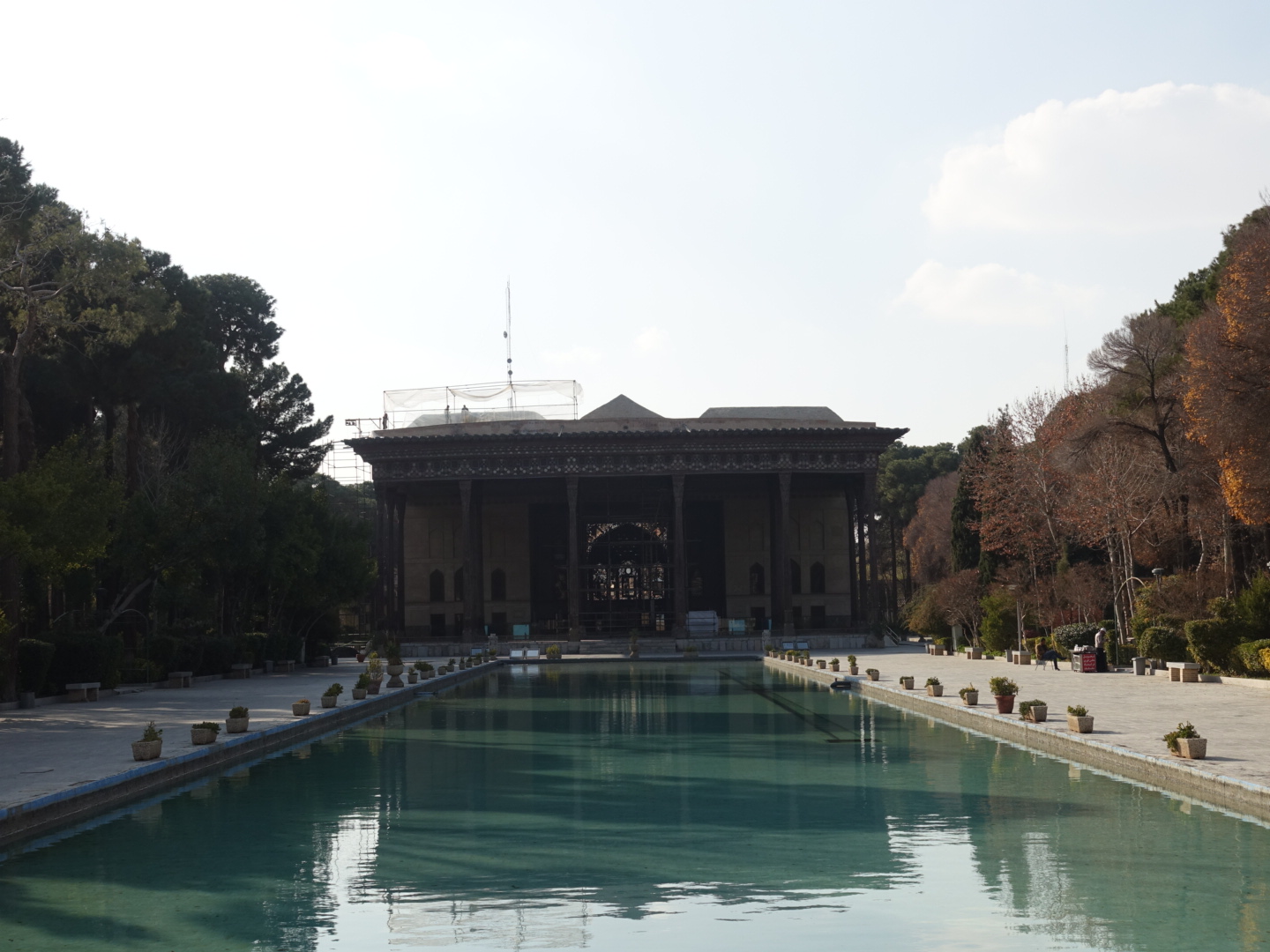
As for the touristic activities, I visited the square mentioned before, and a church and several mosques I had already seen five years ago, but wanted to see again. The city is rich in history, on display at certain locations inbetween the sprawl of a modern Iranian city. Most fondly I remember the days walking around with other people, talking of our travels and cultures.
The bazaar is another sight to behold. Specifically Esfahanian crafts are produced there. Not specifically for tourists, not imported from other countries where they're produced cheaply. True artists practicing their craft (making patterned wooden boxes, hammering silver metals into ornamental wall decorations, or shaping copper cups, vases and goblets), or sellers of those iconic persian carpets with motives depending on the region in which they have been woven. One can wander around there for a long time, invited in by cunning salesman that explain they only want to show you their wares while enjoying a cup of tea, but inevitably bringing you to the point of wanting to buy some of their impressive goods even though you'd have a hard time bringing them along on your bicycle.
As the days passed my bum seemed to recover, and after those five days at the hostel I felt like I could continue my journey on two wheels. Several of the people I had met helped me on deciding the last leg of my journey. A friendly young man from Sirjan invited me to spend time in his city, and other people's advice guided my decision to head to Yazd as my next destination. Luck would have it that an Iranian-Dutchman I had met in Luleburgaz (Turkey), whom I was still in contact with, had provided me with a route that would head there. And so I headed towards the desert.
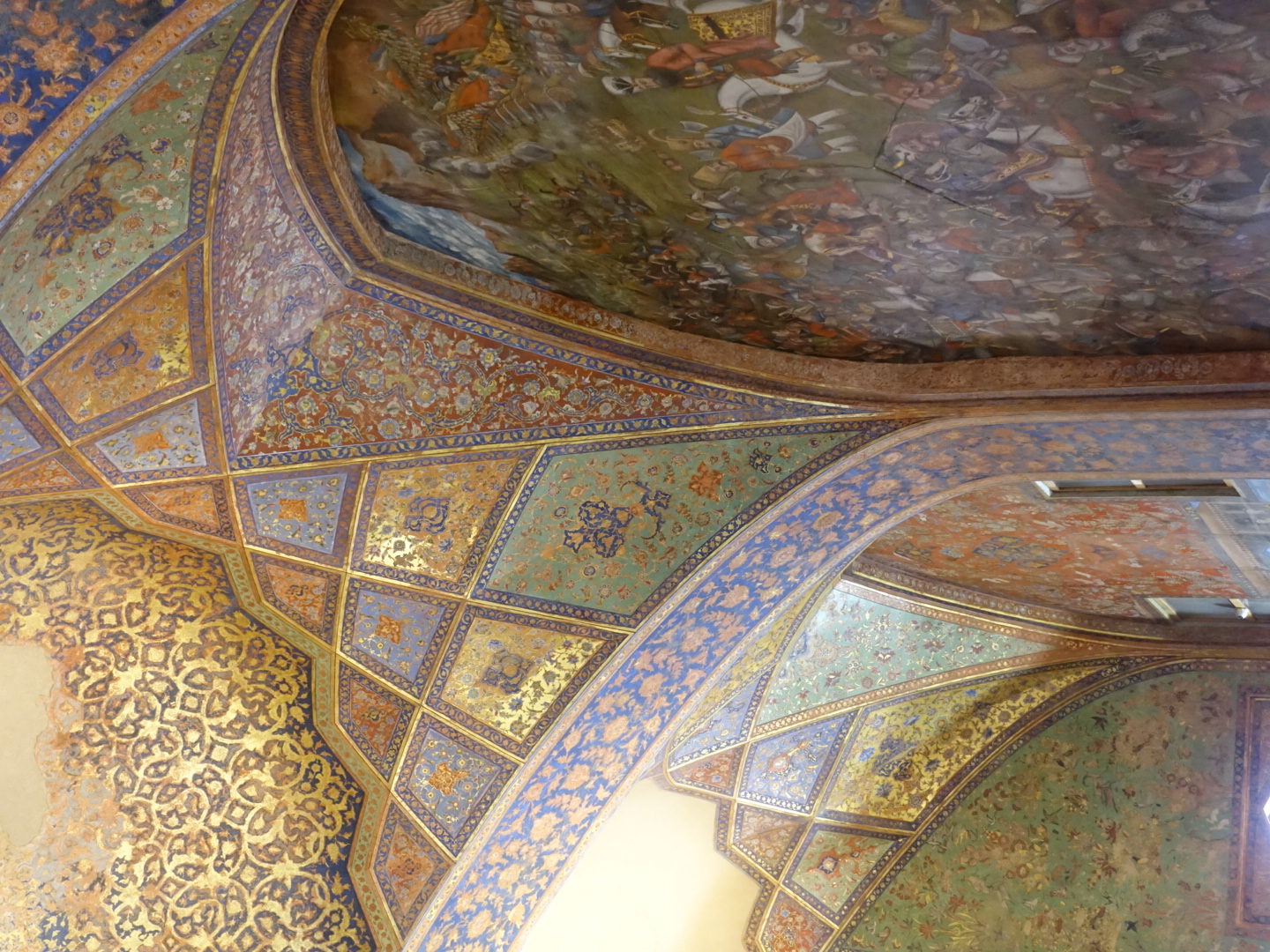
Through the desert
The first day heading out of the city was a bit chaotic. I cycled along big roads full of traffic, although safely on the shoulder, until I could take a turn onto those smaller less traveled roads. Long straight roads brought me further east. The land was remarkably flat, passed through small villages, and had irrigated farms on both sides. It must be quite an effort to grow food on the edge of the desert.
The next day I awoke amidst the pidgeon towers and an old castle that were my surroundings for that night, and I continued eastwards along similar roads as the day before. I passed through the town of Varzaneh, where the majority of the women are dressed in white chadors. Apparently special to this particular town, judging by a statue of a woman veiled in white on a particular roundabout. In the town's park I had my lunch and loaded up on water before heading towards Yazd again.
As I left the town I felt like the desert proper began. No endless dunes of sand though, which is the image that is conjured in the minds of most people (including me), rather an expansive terrain with rocks and sand. Here and there mountains jut out of the terrain, the sand that has been blown at their feet for countless years creating a gradient of beige-gray transitioning into the brown-gray of those mountains. Look at it long enough and you're reminded of large fish slowly coming up from air out of the beige sand. As if those mountains may at any point recede into the soil again, the gradients diminshing in contrast until only a flat desert remains.
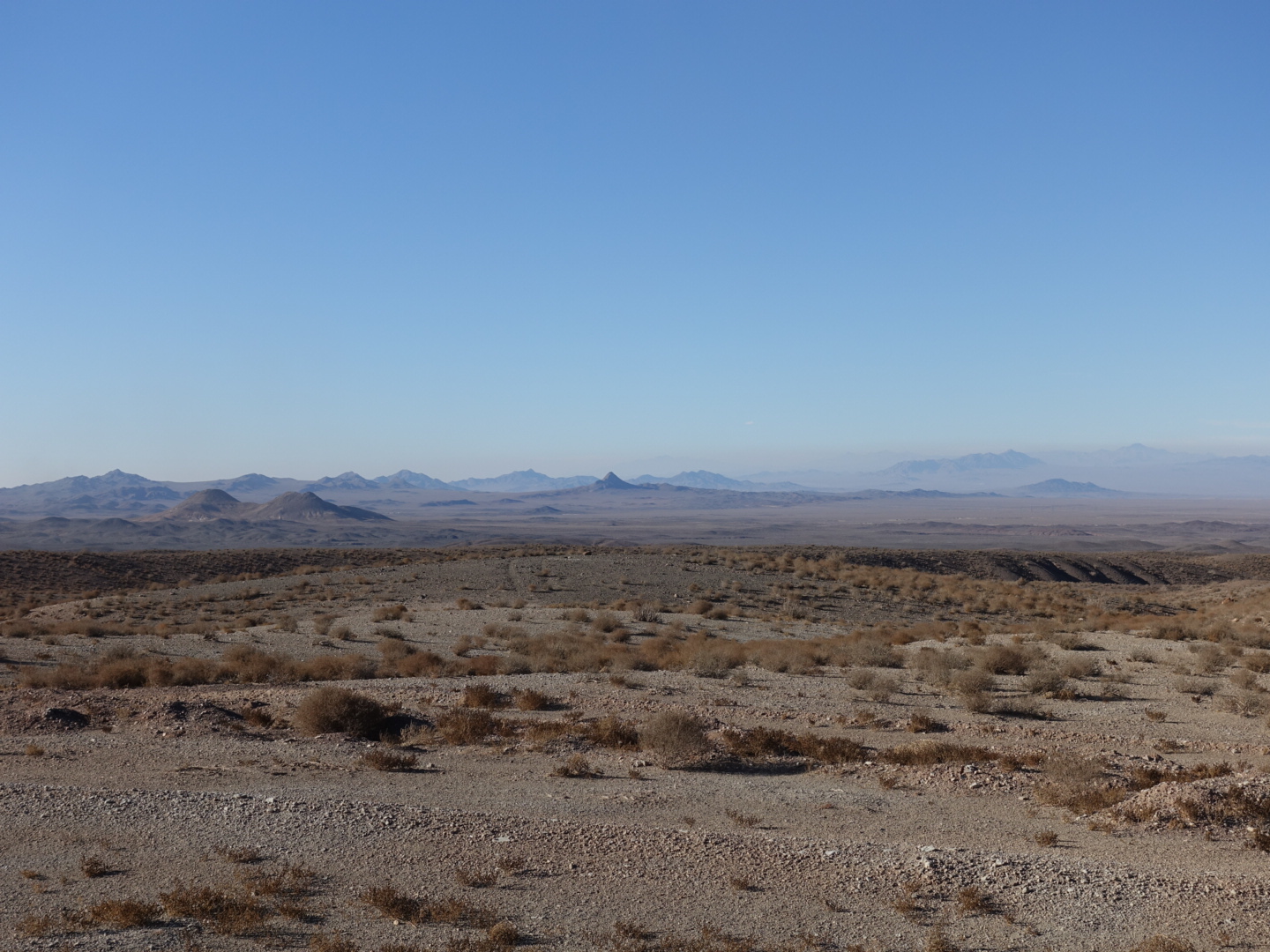
All that vastness plays tricks on the mind as well. Unbeknownst to me, up until that point, I had developed an intuition for guaging distances based on the terrain. But these are useless in the desert. A straight road may run ahead of you, mountains scattered around it in all directions, the sun in your back and the asphalt reflecting it like a mirror as you turn your head. You feel like you're nearly at that village, where you plan to take your next turn on a new road, but the fact is that you're looking at a settlement that is thirty kilometers way. It will take 1.5 hours until you reach that point in the distance.
There is a beauty in this landscape, but as you can imagine you have a lot of time to contemplate it while journeying along roads like these. It is strange to have traveled through this place for three days, but the remarkable features that remain in your mind can be counted on one hand. Amonst these is a caravanserai that I encountered halfway to Yazd. It is a relaitvely low castle-like building with an open courtyard, a cistern at its middle, and several dozen of open rooms facing the courtyard. 99 of these caravanserai were built in older times to provide shelter for the caravans moving along the silk road.
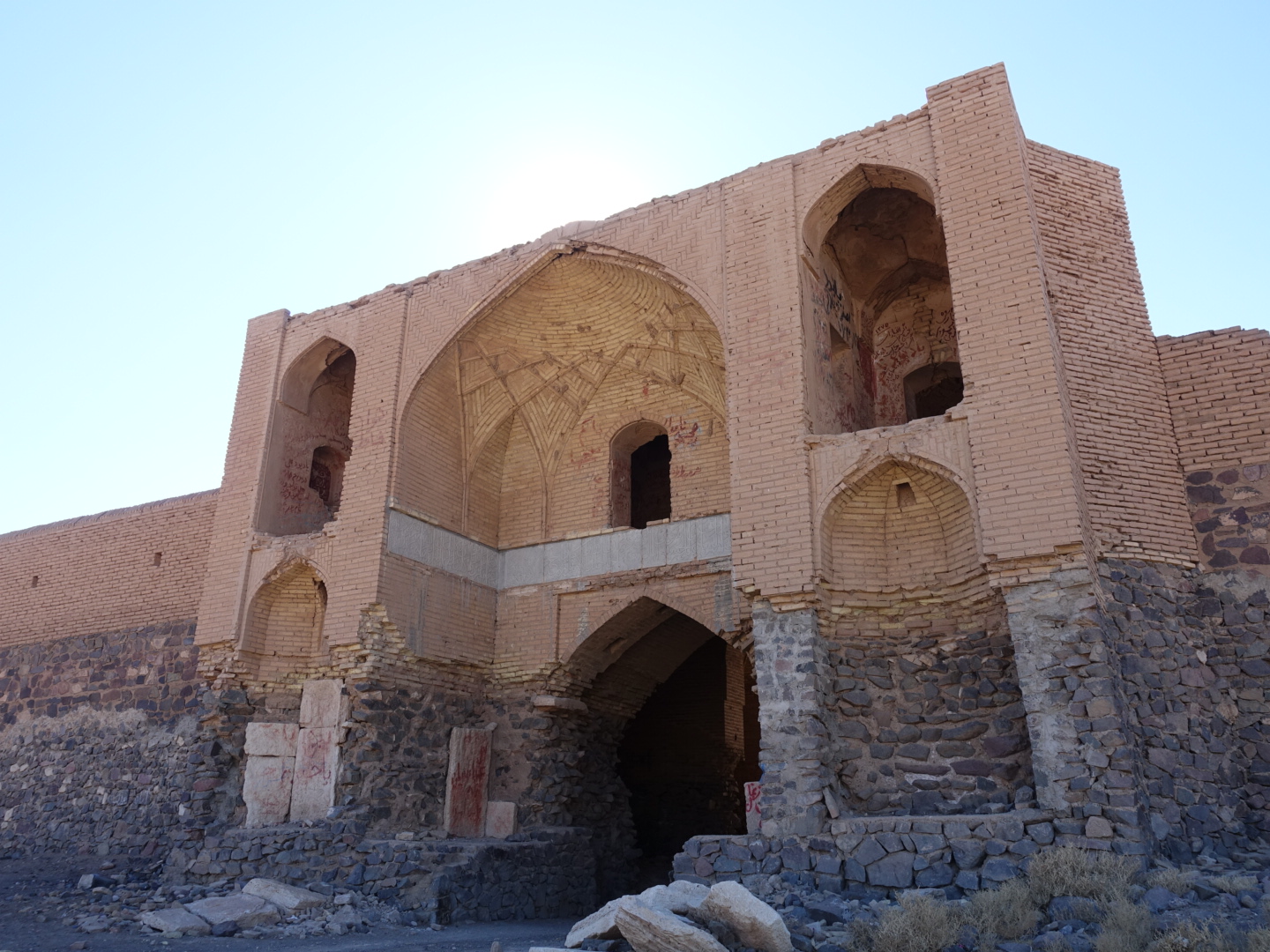
I encountered that caravanserai after a slow but steady climb up until the highest point of this leg of the journey. After reaching the highest point the road sloped downward by an equally gentle amount. This made the last 80 kilometers towards Yazd easy cycling as I slowly but surely lost 700 meters in elevation. Mountains gave way to another great plain and straight roads to cross it towards Yazd.
The favourable conditions brought me into the city of Yazd early in the day. Close to the old city I found another place to sleep for two nights in an old villa converted into a hotel.
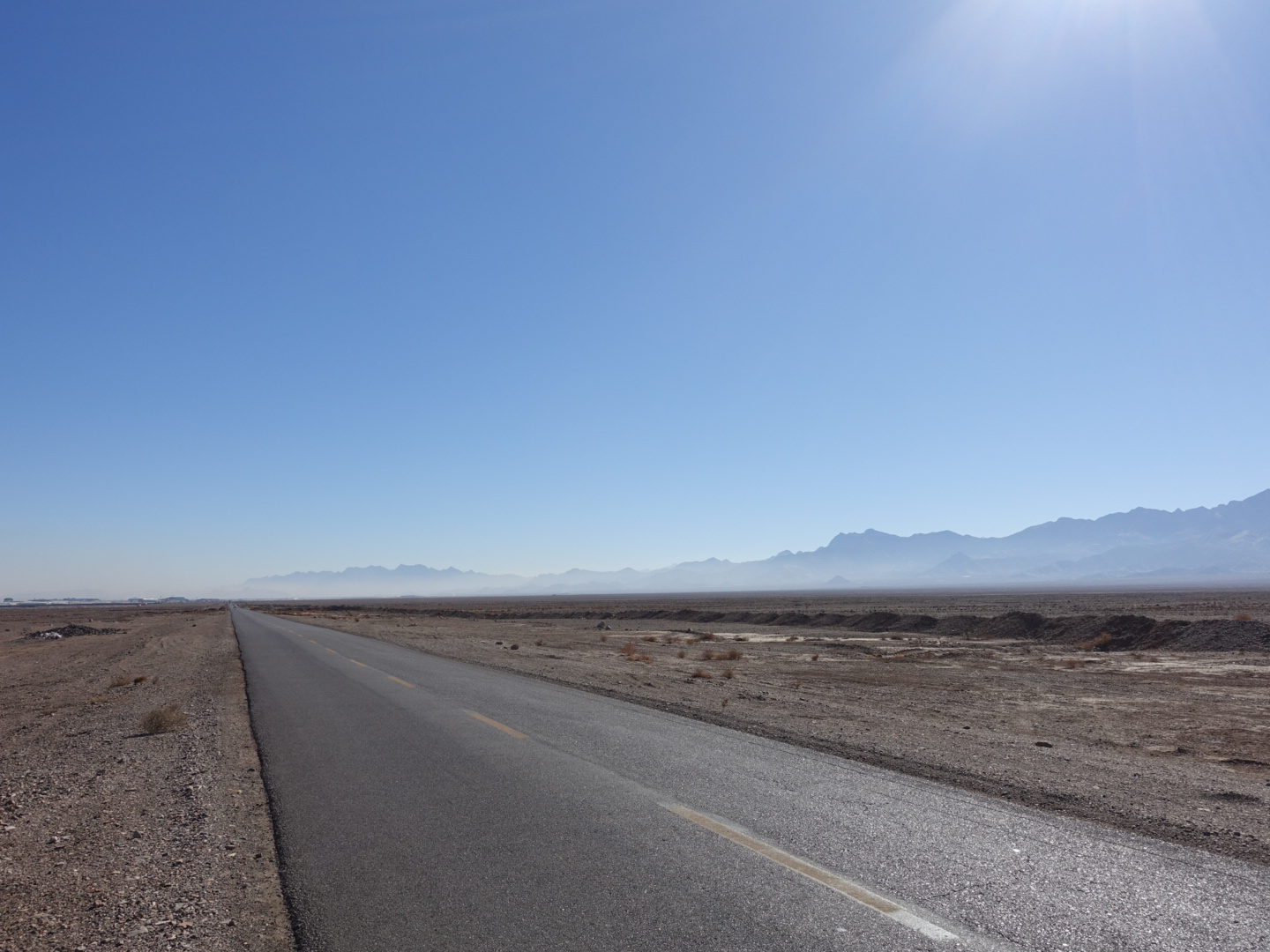
Yazd
Like Esfahan, Yazd was a city I had already visited five years ago. Before coming here again I already had its countless windtowers in my mind's eye. The people that lived here in older times lived in the middle of the desert, and their engineering efforts were focused on living in such a hostile place. A system of undeground rivers, called qanats, tunnel their way beneath the city. Some of this ends up in cisterns that are accessible directly from street level, some of it ends up in cisterns beneath the villas of the ancient rich. These are generally cool places, and so were not only used to store refreshingly cold water, but also to store food alongside them.
The windtowers are built to catch and channel air downward to produce a breeze where it is wanted. These may just guide the air through the courtyards and rooms of those villas, but at its most ingenious (if you had enough money, back in the day) the wind first passes over a small pool of water to cool the air down before it flows where it is wanted.
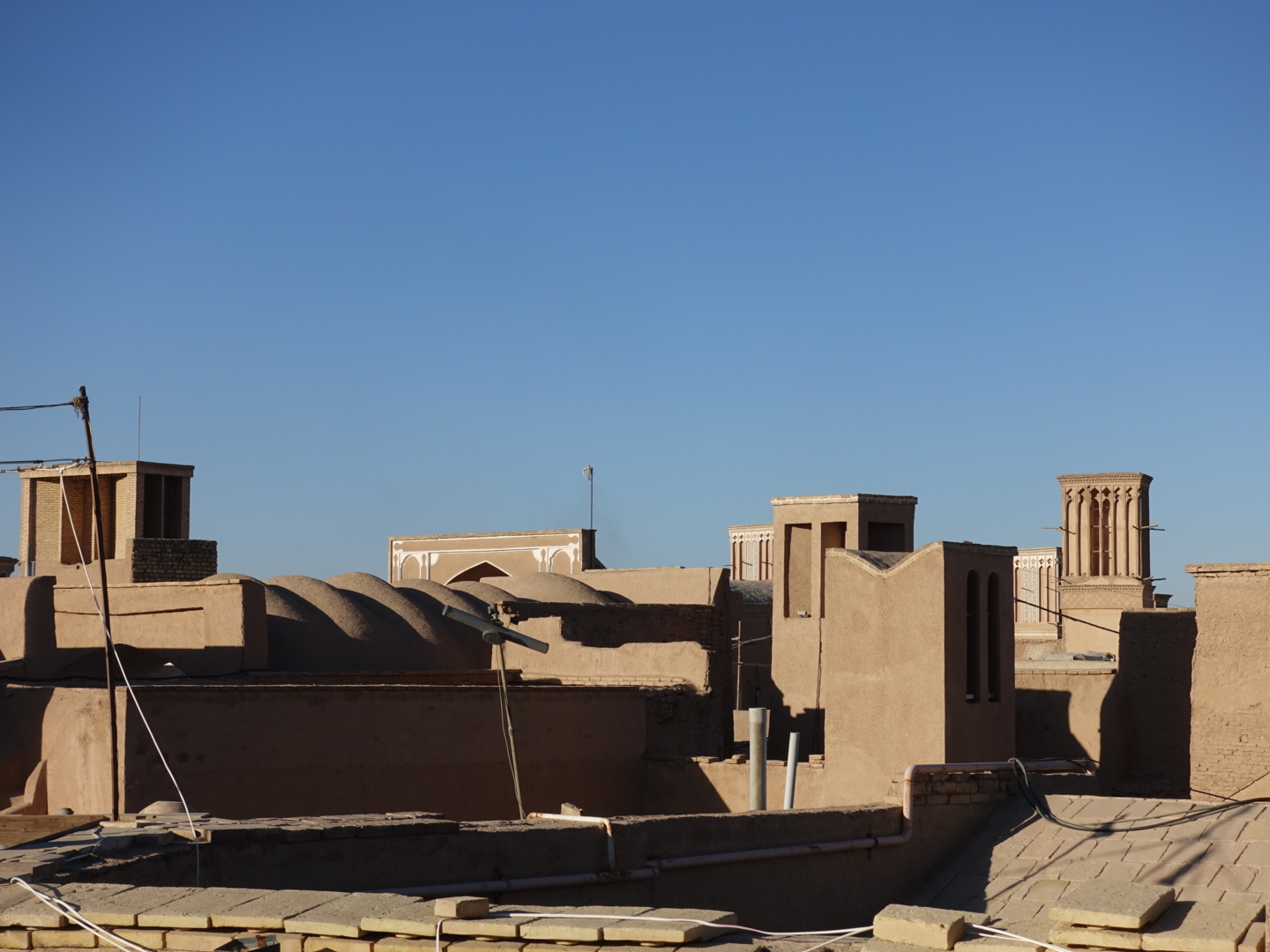
In the oldest part of the city you find yourself walking through a maze of high walls, sometimes domed, made out of clay and hay. The fibers of the hay visible if you look at the walls closely enough. I'm aware that I'm walking through these corridors in the winter (in a shirt, as it is pleasantly warm for a Dutchman), but you can imagine how much colder the place must be in summer than if these walls weren't there. And always a breeze blowing through these alleys. I imagine produced in part by these windtowers, but I'm not completely sure.
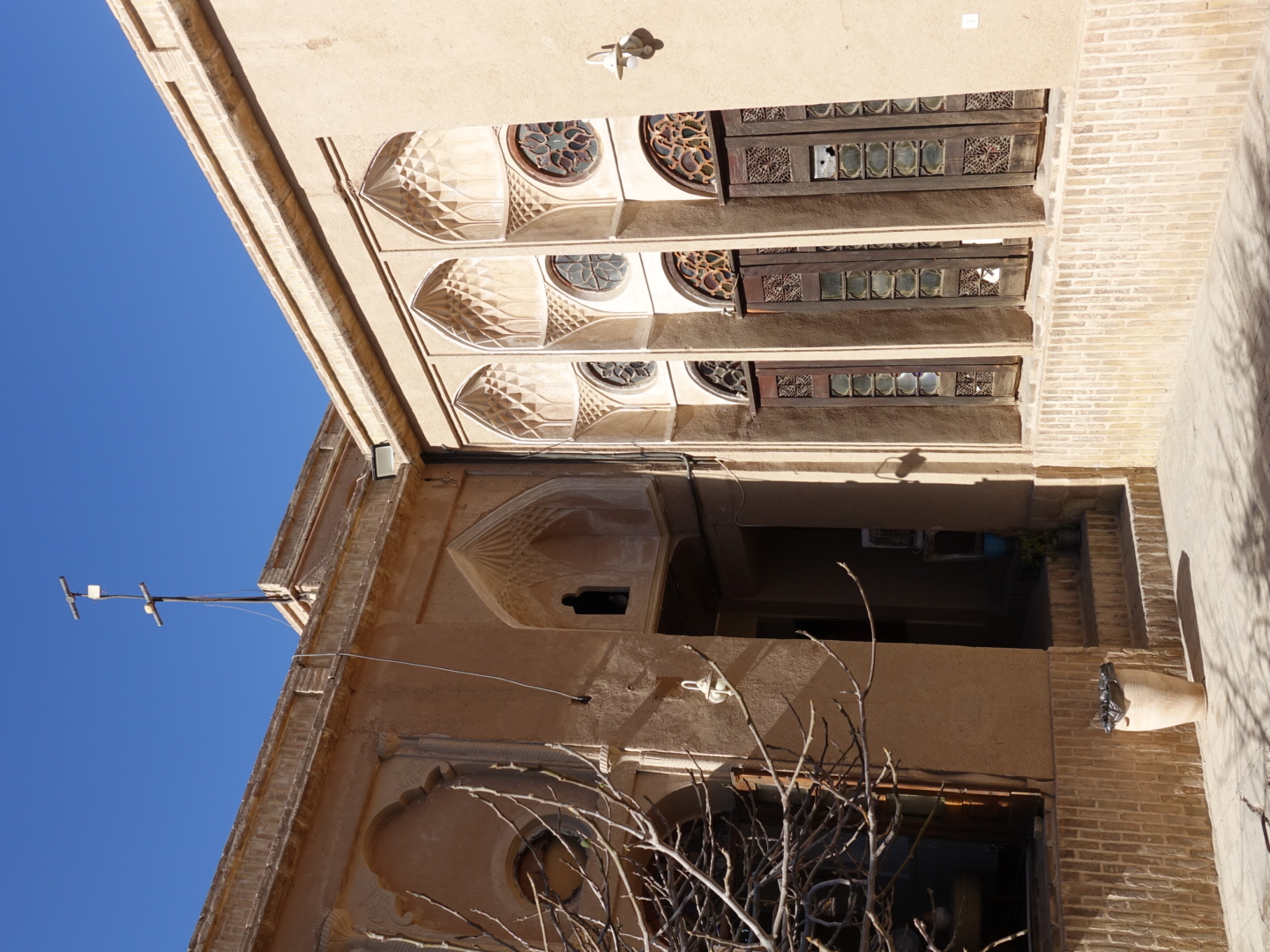
I tried messaging some people that I had met in Esfahan, and as a result spent an afternoon having lunch with two of those earlier-met travelers on a rooftop restaurant overlooking mosques and those ubiquitous windtowers. Along with a third companion we drank tea and ate Yazdian cakes in the evening.
The time inbetween I spent walking around that maze in the old city center and visiting the mosques, a restored villa, Alexander's prison, and the Zoroastrian fire temple. I was a lot better at being an efficient sightseeing tourist in Yazd than I was in Esfahan. Courtesy of the lack of company while I was eating my Iranian breakfast and having my morning tea. My next destination had been decided in Esfahan. In order to cycle the last section of my journey on my way home without feeling hurried, and in order to visit a friend I made in Esfahan, I would be taking another bus. This time to Sirjan.
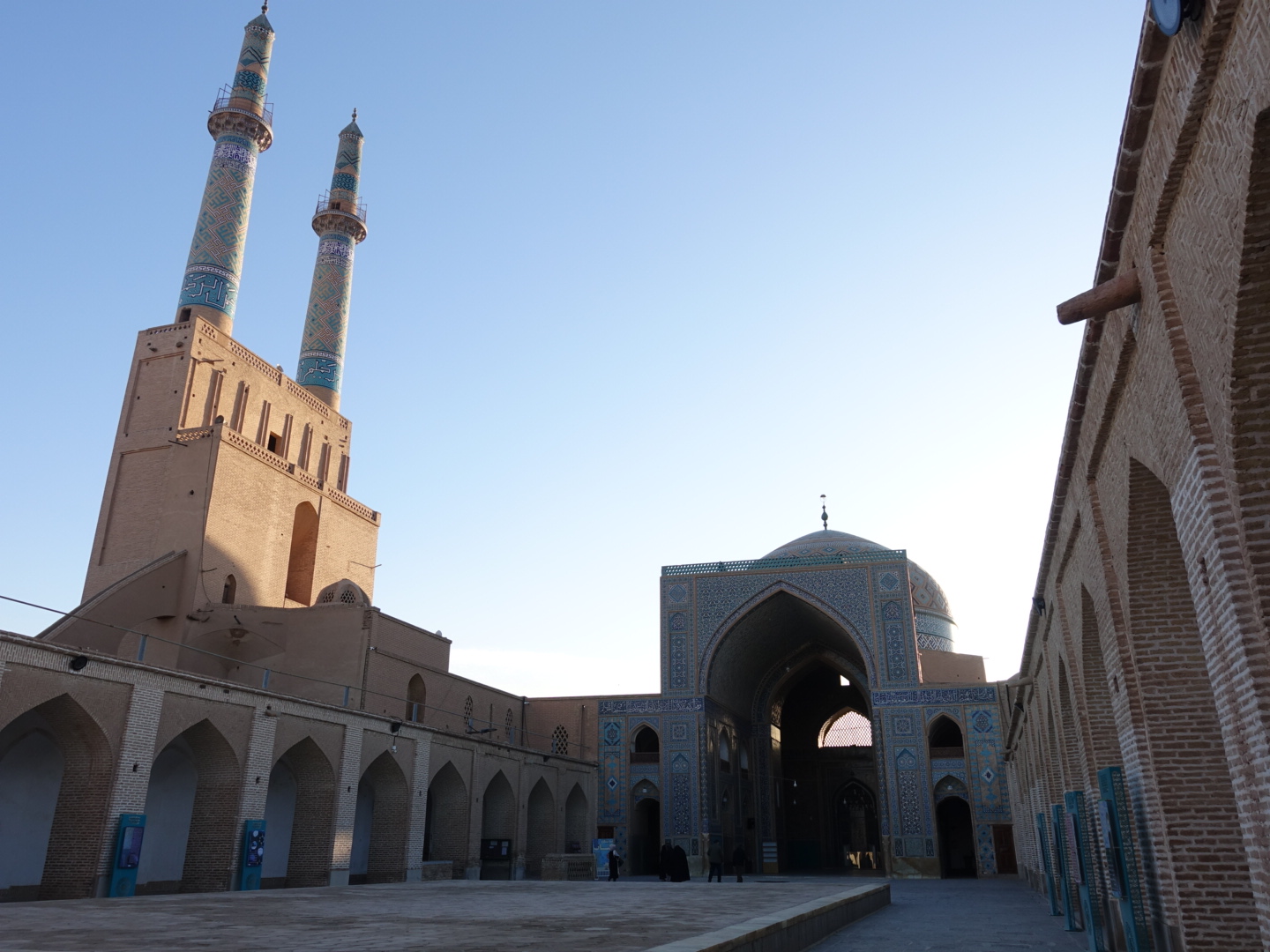
Sirjan
The bus left Yazd relatively late, at 17:00, and would take 6.5 hours to bring me to Sirjan. I expected it to take a whole lot less, so spend some amount of time profusely apologising for my tardiness to my host in Sirjan by way of sending messages from the bus. I arrived at the busstation of Sirjan close to midnight, and was awaited by my friend and his brother who put my bike in the back of his car, and took me to his family's house. There I was simultaneously flattered and emberassed to discover that his entire family had waited with eating dinner until my arrival. On top of that, because we spoke of it in Esfahan, my friend had remembered that Dizi was my favourite Iranian dish and his mother had made it especially for me.
The night was short, as you can imagine, and the next day we went for a trip through Sirjan. Together with another friend and my host's brother we visited the "stone forest" on the outskirts of the city, seeing many pistachio-orchards along the way. We had kebab for lunch, and went back to Sirjan afterwards in order to make up for the lack of sleep by a two-hour nap. Refreshed we went out again for a final tour of the city, and came back to eat Ghormeh Sabzeh, again prepared by his mother, and again delicious. The chef was skeptical about my appreciation of the dish, so I let my manners slacken a bit and used my cycletourer's appetite to show how much I liked it.
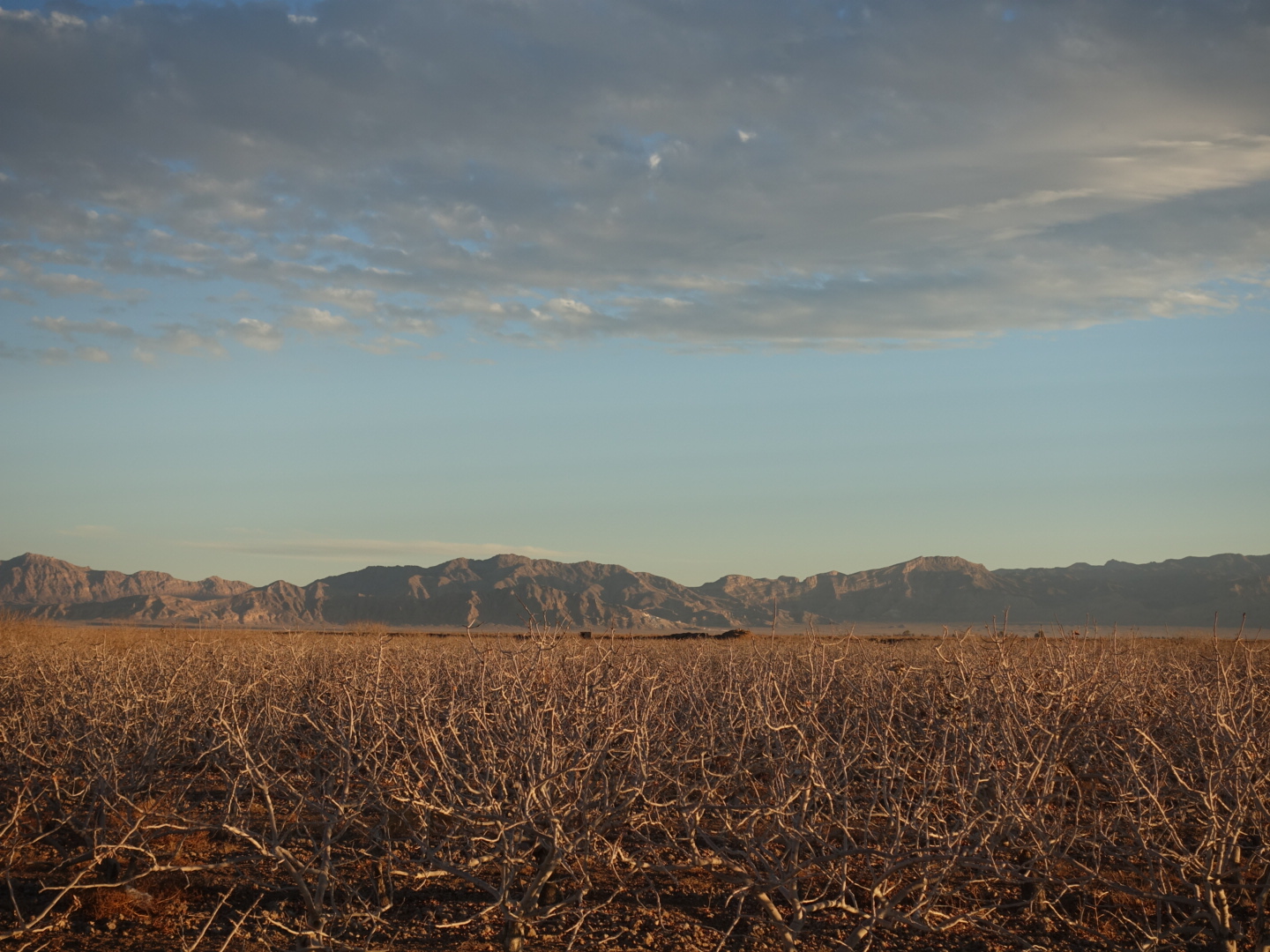
And then came the moment to leave again on my final leg of my journey. Its initiation delayed a bit by my lack of funds. I had enough money to reach Bandar Abbas, but required a bit more to, if time allows it, make a final detour to one of the nearby islands: either Qeshm or Hormuz. Luckily the traveler's-whatsappgroup provided a solution. I posted a plea for help which was answered by an Iranian-Dutchman who agreed to wire money to an Iranian person using his bank account. I would in turn wire him some money. And the recipient of the transferred rials would turn them into cash at the bank. Luckily my host agreed to execute this last part of the plan.
And so I set off again, towards Bandar Abbas, where I'll be getting on a boat to Dubai, and then on an airplane back home. I'm getting close to the end of this amazing trip. By now I'm not only looking forward to the journey anymore, the destination brings a smile to my face as well.
